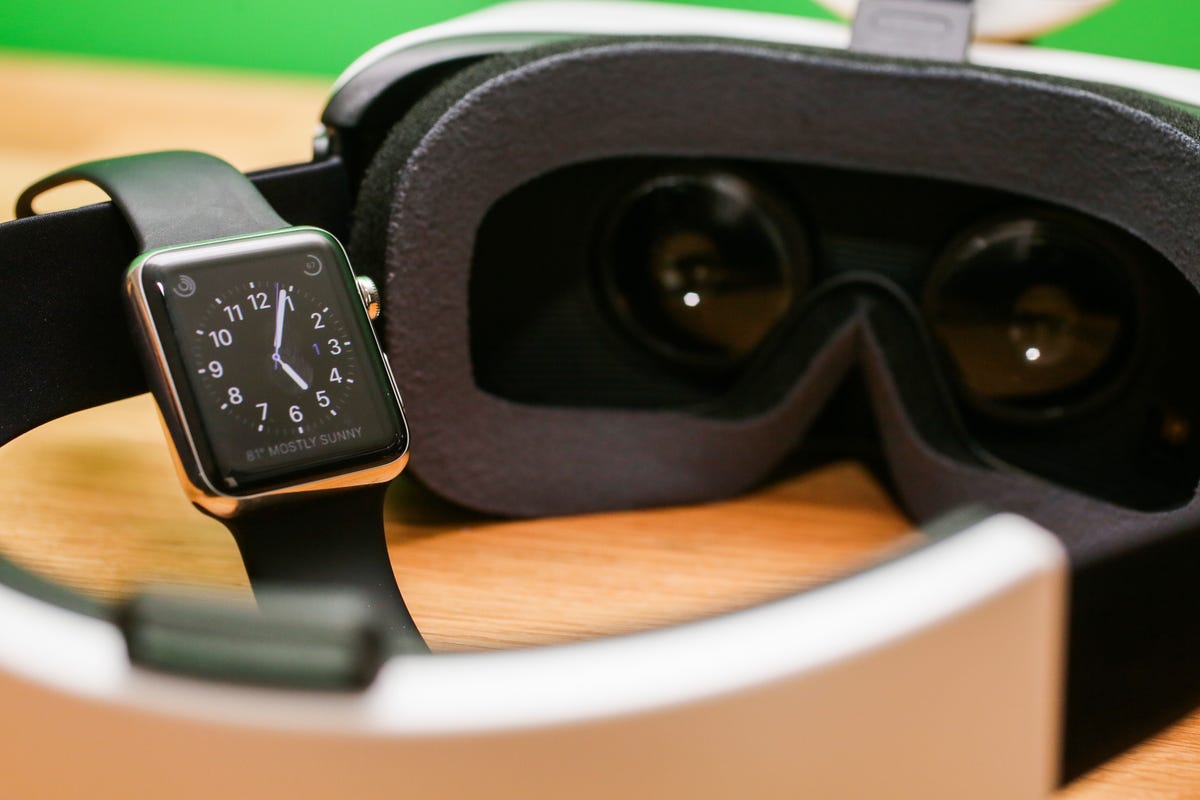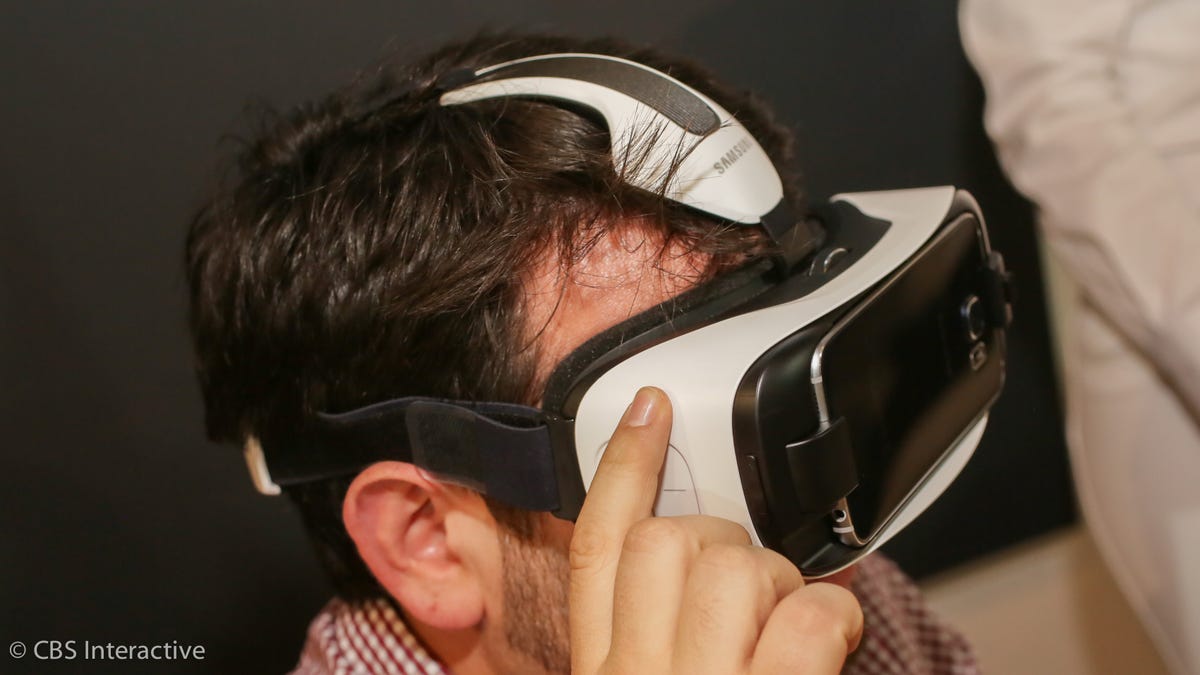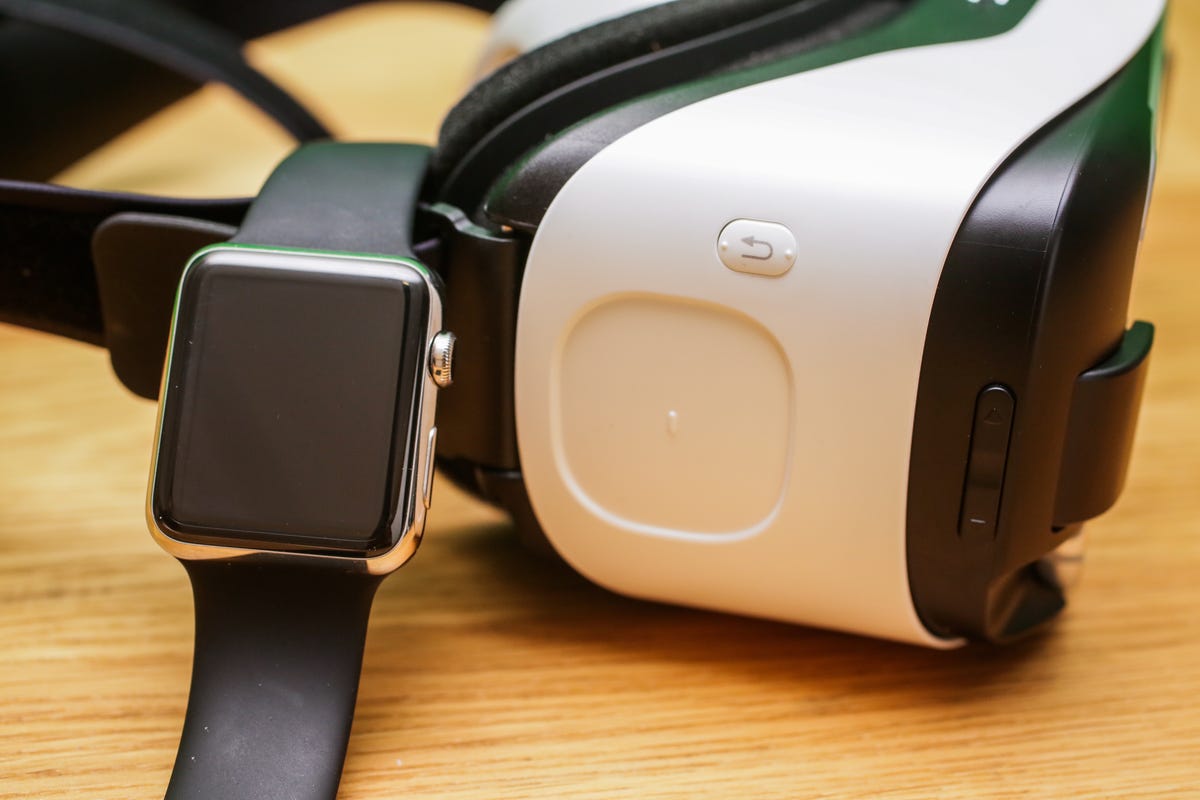
Sarah Tew/CNET
I’m sitting down in the middle of an asteroid belt. And I forgot where my controller was. Somewhere off to the left of me, I think. My hand’s fumbling over papers, I think I knocked over a can of soda. That gamepad has to be around…but I’m blind. I’m being shot at. I reach up and fumble for a touchpad on the side of my head.
I wish I had a touchpad that was always on me, something with extra buttons, maybe, or motion controls. Something I could use all the time: that I could find by feel, and operate easily.
The Apple Watch on my wrist buzzes. I can’t see its screen while I’m goggled. But I can feel for it. I wish it could help me.


Sarah Tew/CNET
Virtual reality transports people to other worlds using immersive 3D goggles that can track head motion, but interacting with those worlds is still a work in progress. Most home kits like the Samsung Gear VR rely on a basic Bluetooth controller, or a basic touchpad on the helmet as a way of navigating. Or, simply pointing your head, which has limited use. It’s a journey in the dark, seeking better tools.
These problems will be conquered down the road with improved controls. Cameras will scan your hand motions and let you reach for objects, like what the Microsoft HoloLens already does. Oculus has unveiled the Oculus Touch , a very promising hand-based controller for its upcoming Rift headset. and Sony’s Project Morpheus and the HTC Vive have specialized wands. But most of these solutions are large, platform-specific, purpose-built. for mobile VR, I’d want something smaller…more portable, more always-ready.


Sarah Tew/CNET
The biggest drawback to Samsung’s Gear VR, after a few months of using it, is its lack of intuitive input. I don’t like fumbling for the touchpad on my head. The gamepad is fine for some games, but it’s not useful for most basic navigation. I’d love to have something small but comfortable to access. A tiny, handheld navigator.
Smartwatches are bundles of potential, with limited use cases. I use my smartwatch to messages on the small screen, track fitness, check the weather and — of course — get the time. But smartwatches are already little controllers. The Apple Watch has an accelerometer and gyroscope; it’s a motion controller. It has haptics, which means vibration feedback (finely tuned, at that). It has a touch surface that’s also force sensitive. It’s got a microphone, and it even has a few buttons. And it’s always on my wrist, so I always know where it is.
Right now, the Apple Watch doubles as a remote control for certain functions on your iPhone, such as music playback or camera controls. It can be a basic Apple TV remote. But why stop there? How about working as a remote for glasses, or goggles? If I could tap on my watch and see things projected in front of me, or use it to navigate by touch and haptics while I’m in another world, it could be magic mini remote for my personal virtual life. With real onboard apps coming later this fall, odds are people are already thinking down these roads. If not, they should be.
When Samsung finally gets around to releasing another Gear smartwatch, I hope it doubles as a controller for Gear VR. And I’d love to see some augmented-reality pioneers explore development with connected watches, too. There are bound to be a lot of new types of virtual reality inputs, like the Oculus Touch and HTC Vive’s magic wands.
But for everyday mobile virtual explorations, the best input might already be on some of our wrists.



